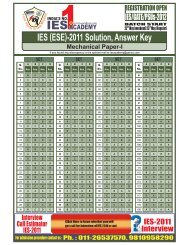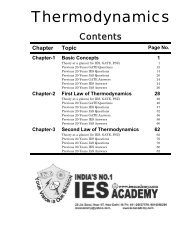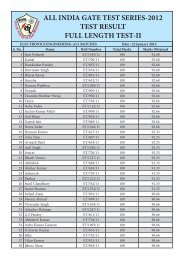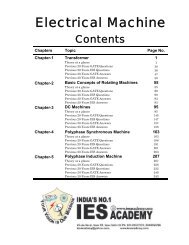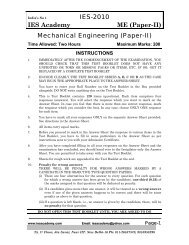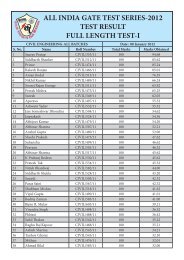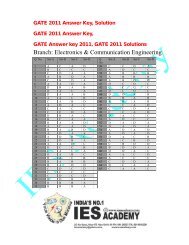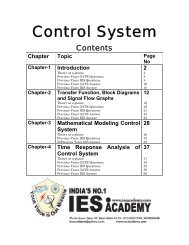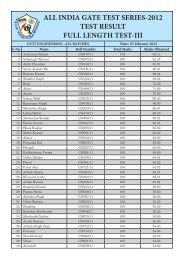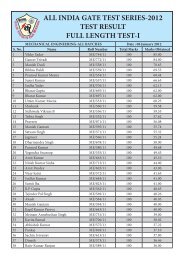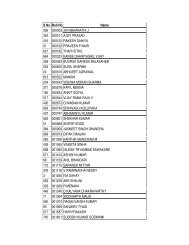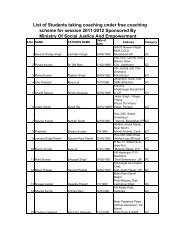IES-2010 IES Academy ET (Paper-I) Electronics Engineering (Paper-I)
IES-2010 IES Academy ET (Paper-I) Electronics Engineering (Paper-I)
IES-2010 IES Academy ET (Paper-I) Electronics Engineering (Paper-I)
You also want an ePaper? Increase the reach of your titles
YUMPU automatically turns print PDFs into web optimized ePapers that Google loves.
India’s No 1<strong>IES</strong> <strong>Academy</strong><strong>IES</strong>-<strong>2010</strong><strong>ET</strong> (<strong>Paper</strong>-I)Q96. The depth of penetration of a wave in a lossy dielectric increases withincreasing(a) Conductivity(b) Permeability(c) Wavelength(d) Permittivityj t zQ97. The polarisation of a wave with electric field vector E E e ω − β= a x + awww.iesacademy.com Email: iesacademy@yahoo.com Page-17__(a) Linear(c) Left hand circular(b) Elliptical(d) Right hand circular( )( y)Q98. The radiation resistance of a circular loop of one turn is 0.01 Ω. Theradiation resistance of five turns of such a loop will be(a) 0.002 Ω (b) 0.01 Ω (c) 0.05 Ω (d) 0.25 ΩQ99. An antenna in free space receives 2 μW of power when the incident electricfield is 20 mV/m rms. The effective aperture of the antenna is(a) 0.005 m 2 (b) 0.05 m 2 (c) 1.885 m 2 (d) 3.77 m 2Q100. The maximum usable frequency of an ionospheric layer at 60° incidenceand with 8 MHz critical frequency is(a) 16 MHz(b) 16 MHz3(c) 8 MHz25, 1 st Floor, Jia Sarai, Near IIT. New Delhi-16 Ph: 011-26537570, 98109582900(d) about 6.93 MHzQ101. Bond strength of secondary bonds is in the range of(a) 1 kJ/mol (b) 10 kJ/mol (c) 100 kJ/mol (d) 1000 kJ/molQ102. Electron sea exists in(a) Polar bonds (b) Ionic bond (c) Covalent bond (d) Metallic bondQ103. Coordination number for closest packed crystal structure(a) 16 (b) 12 (c) 8 (d) 4Q104. Pick the thermo-plast from the following(a) Vinyls (b) Epoxies (c) Resins (d) Vulcanized rubberQ105. Schottky-defect in ceramic material is(a) Interstitial impurity(b) Vacancy- interstitial pair of cations(c) Pair of nearby cation and anion vacancies (d) Substitutional impurityQ106. Basic source of magnetism ______________.(a) Charged particles alone(b) Movement of charged particles(c) Magnetic dipoles(d) Magnetic domainsQ107. Match list-1 with list-2:List-1List-21. Dia-magnetic (A) superconductors2. Para-magnetic (B) alkali metals3. Ferro-magnetic (C) transition metalsis



